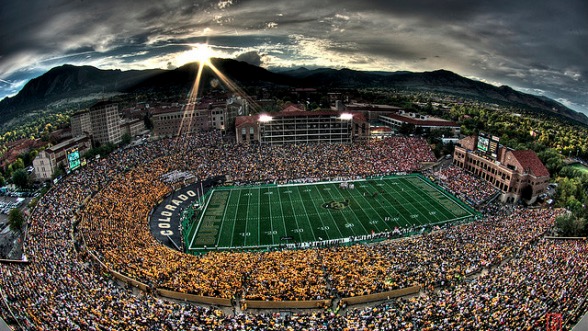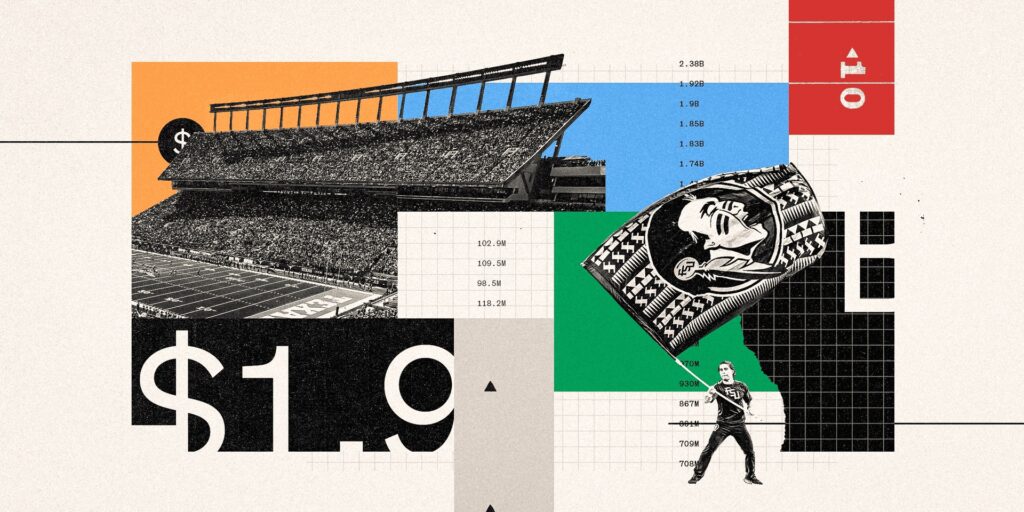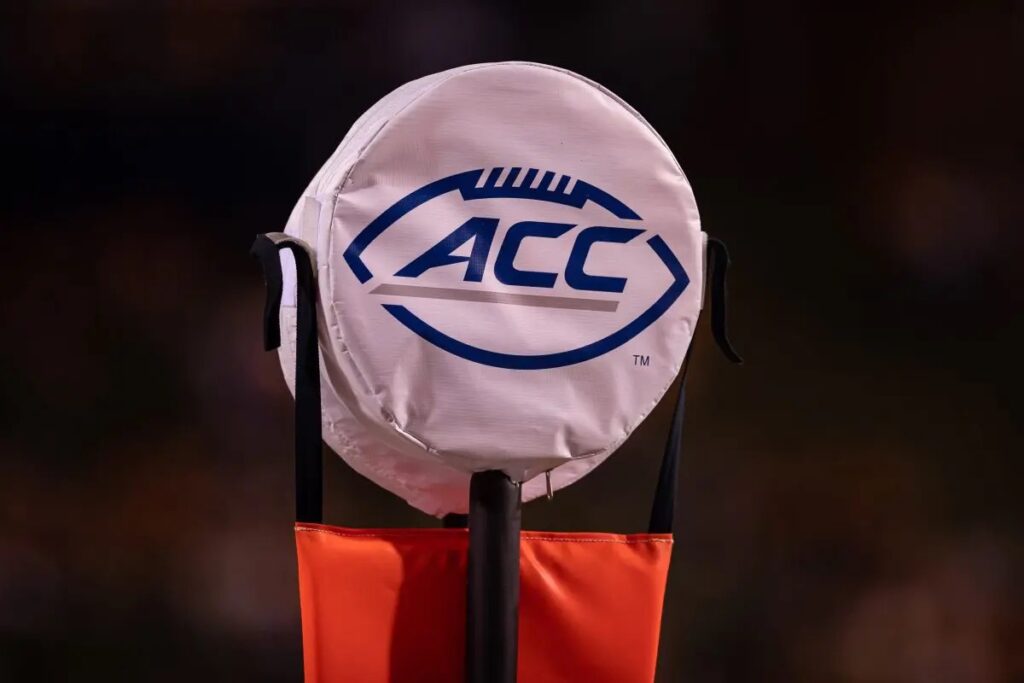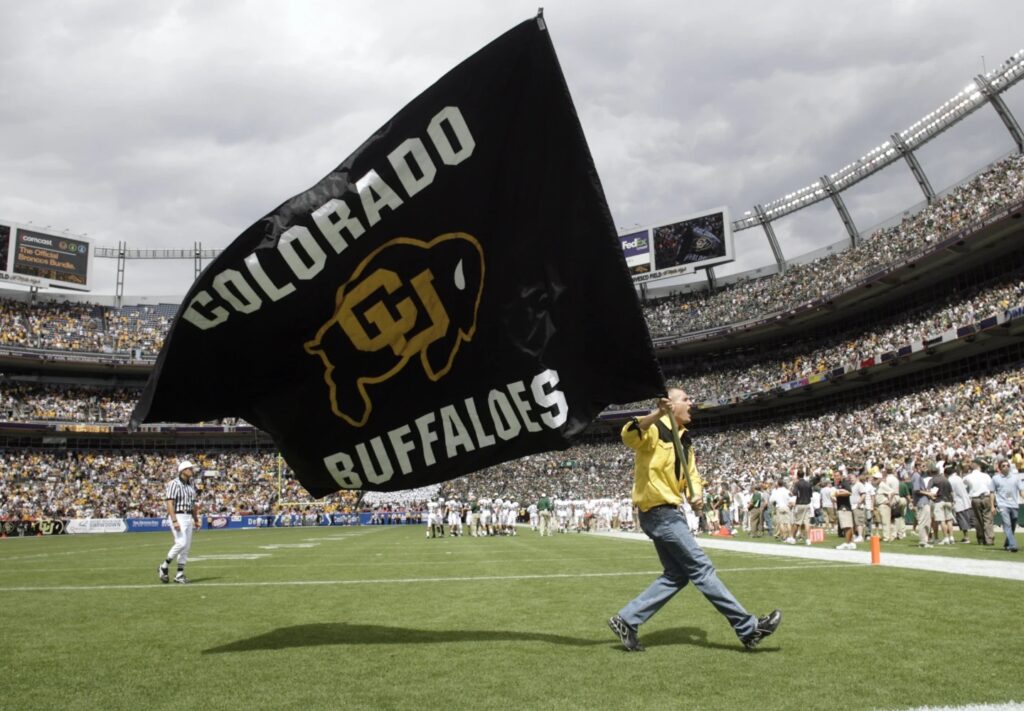
CU’s conferece affiliation is the single most critical issue that CU’s athletic department will face over the next 10+ years.
The Big 12 Conference is a second-tier conference in the modern power structure. The Big 10 and SEC are the alpha dogs, with the ACC and Big 12 filling in the next rung. Starting this next year, the Big 10 will distribute approximately $80 million to each of its teams as conference distributions — though Oregon and Washington will receive less as they phase into full shares. The Big 12’s distribution will sit around $50 million per school beginning in the 2025-26 cycle, which will also be the first year Cincinnati, USF, Houston and BYU are receiving a full-share of conference distributions.
The $30 million annual gap is why conference affiliation is the defining issue for CU athletics.
Slow down, John. To understand if this is really CU’s “defining” issue, I need you to explain CU’s financial picture.
Here’s the view:
| Total Revenue: | $146.6 million |
| Total Expenses: | $138.3 million |
| Profit: | $8.2 million |
Yes, CU posted an $8.2 million profit! This is a welcome change after running deficits in five of the last six years. Deion Sanders’ arrival supercharged the Buffs’ brand, driving record revenue. CU raked in $31.2 million from football ticket sales alone, nearly doubling the previous school record. With some of the highest ticket prices in the country, football is finally helping foot the bill.

A profit?!?! Amazing — but, uhhh, where does the money actually come from?
The biggest source? Conference payouts.
And where do the big conferences make money from?
Media rights! The Big Ten’s blockbuster deal with Fox, CBS, and NBC, signed in 2022, is worth north of $7 billion over seven years. By the end of that deal, each school is set to earn more than $70 millionannually just from TV rights. The SEC isn’t far behind the Big 10. The Big 12 and ACC schools will receive materially less — clearing about $40 million a year in TV money as we head toward the back half of the decade.
But once you step outside the power conferences, big TV money disappears fast. Boise State and the rest of the Mountain West, for example, saw distributions of around $5 million per school in FY23. Conference USA and MAC programs bring in less than $1 million a year in TV money. And at the bottom of the D-I pyramid, some schools might not see any media revenue at all. Even in leagues like the OVC, where ESPN pays a fee for broadcast rights, much of that money might go toward buying linear time slots or helping schools cover production costs. If you’re in a one-bid basketball league, you’re not making real money on TV.
But media rights aren’t the only source of conference revenue.
Deep NCAA Tournament runs in men’s or women’s basketball can bring in sizable “unit” payouts that stretch into seven figures. These figures also comprise part of conference distributions.
College football playoff revenue is also part of conference distributions. The Big 12, for example, gets a base CFP distribution in the $80-100m range annually, which is shared among all members. Other funds come from ticket sales and sponsorship revenue from conference championship games and licensing/digital content.
OK, I get it. Conference affiliation seems to be CU’s financial lifeline. But does CU’s AD make money elsewhere?
After conference distributions, ticket sales are CU’s next biggest revenue stream. But there’s a big difference between selling out 100,000-seat stadiums in Ann Arbor or Knoxville and putting 50,000 into Folsom Field. Texas led the country in ticket revenue in FY24, pulling in over $60 million from ticket sales — not just from football, but from basketball, baseball, volleyball, and more. Seven schools managed to break the $50 million mark.
In FY24, CU pulled in $35 million of ticket sales, of which $31.2 million were from football.
So things are good. We’re making it work. We don’t need more money, right?
Not so fast.
While CU’s Athletic Department had an $8.2 million “profit,” if we dig a little deeper, we see that the total revenue numbers included some university help. Institutional support comes in two forms: student fees and direct university subsidies.
Student fees are common across college sports—some students pay $1,000+ per year as an athletics fee whether they attend games or not. CU’s fee has historically been modest, at $60 per year, but that will triple to $180 starting this fall, largely due to the House v. NCAA settlement (we’ll get to that).
In total, CU collected $1.6 million in student fees last year. That’s typical for the Big 12, but far less than schools like Colorado State, where student fees topped $10 million.
Then there’s the more direct help: $31.9 million in general university funds went to CU Athletics last year. Without that money, the athetics department is in the red.
In other words, CU needs this money to fill in the financial gaps.
Truth be told, however, only about a dozen athletic departments are entirely self-sustaining. Another small group could probably get there if they really wanted to shift some numbers around. But for the vast majority of D-I schools, including CU, the economics don’t work without help. They don’t sell enough tickets, raise enough donations, or pull in enough TV money to make ends meet. They lean on their universities to stay afloat.
Steve Hulbert, CU’s Athletic Department spokesperson, said that CU institutional support was provided to help offset shortfalls in conference distributions. [For more on this, and why we think institutional support makes sense in Boulder, check out our earlier story at https://buffsblog.com/how-much-can-cu-pay-deion-sanders-on-cu-athletic-finances/].

Still think CU doesn’t need more money???
Let’s talk about the asteroid headed straight for Rick George’s desk: the House v. NCAA settlement.
That ruling allows schools to pay athletes up to $20.5 million annually (increasing 4% per year). For Big 12 and ACC schools that have opted in (most have), it’s a huge new cost. The problem? The SEC and Big Ten have that extra $30 million per year to cover it. The Big 12 doesn’t.
[Here’s how CU is planning to allocate its $20.5 million: https://buffsblog.com/inside-colorado-footballs-20-5-million-era-how-deion-sanders-ia-building-a-roster-like-an-nfl-team/]
This context is why CU’s failure to secure naming rights for Folsom Field is so painful. Based on comps, CU could land ~$4 million per year in a naming rights deal. That’s real money. [More on that here: https://buffsblog.com/stadium-naming-rights-how-the-big-bucks-or-lack-thereof-affect-cu/]
CU has options to increase funding —donor support, branding, fundraising —but without dramatically increasing university help, balancing the budget will only get tougher. [It could be worse—just ask Iowa State: https://www.amestrib.com/story/sports/college/2025/07/26/isu-athletic-department-faces-a-147m-funding-gap-whats-to-blame/85374554007]
Enter: Memphis State. The Big 12’s unlikely savior?
Not exactly. But they deserve credit — Memphis State realizes the importance of conference affiliation.
The Tigers’ brass made the most lucrative membership proposal in college sports history last week. Memphis made a pitch to join the Big 12 Conference and it was a doozy. Memphis State proposed that it would take zero distributions from the Big 12 for 5 years; add sponsorships of $200+ million over 5 years to the conference; and subject itself to expulsion from the Big 12 in 2030-2031 if the Big 12 determines it is not adding value.
Yes, really.
Read that again.
Memphis’ pitch was an attempt to make a no-risk proposal to the Big 12. Why would Memphis make such a proposal? Because they understand the importance of conference affiliation to the AD’s bottom line over the long-term. The AAC distributed $11 million in 2023-24, likely the most for a Group of 5 school, but still a pittance compared to the Big 12’s annual distribution of about $50m in 2025-26.
For CU and every Big 12 school, accepting Memphis’ deal would mean an additional $3 million annually in sponsorship revenue.
But the Big 12 turned Memphis down. Why? Concerns that Memphis could dilute future media rights value. Also, fair or not, the underwhelming early performances from American Athletic Conference schools Cincinnati, UCF, and Houston didn’t help. [Shoutout to Houston hoops, though—they’ve carried the flag.]
So what’s the point of all of this, John?
CU needs to do everything in its power to be appealing to the Big 10 and SEC when the next round of conference realignment happens. Only then will CU’s financial issues be met.
CU needs to position itself for the next round of realignment. That means:
- Keeping Deion Sanders in Boulder (check)
- Paying players the full $20.5 million to ensure nationally relevant teams (do it)
- Winning on the field
- Selling out Folsom
- Expanding national reach
- Finding new revenue streams
- Building donor culture
And yes, CU should absolutely consider adding baseball and softball, even if it’s tight financially. [Our scoop on baseball’s potential return: https://buffsblog.com/buffsblog-scoop-rick-george-has-met-with-dustin-pedroia-to-discuss-resurrection-of-baseball-program/]
Most insiders don’t expect seismic realignment until 2029–2030, when the SEC, Big Ten, and Big 12 TV deals all expire—and when the ACC’s exit fees become more manageable. Therefore, folks, CU has four to five years to make its case.

And what’s the most likely outcome? What conference will CU be in for the 2030-2031 season?
In all honesty, I think CU will be hard pressed to get an invite to the Big 10 or SEC by 2030. CU was already passed over in the last round (Oregon and Washington were picked over Colorado). The Athletic pegged CU at the Big 12’s 7th most valuable college football program in a recent article, and while the article has massive holes, it’s worth a quick read. It’s an interesting take from presumably objective persons on CU’s value relative to other programs in the Big 12. See: https://www.nytimes.com/athletic/6500596/2025/07/21/college-football-program-valuations-rankings-2025/ for more.
Still, CU has to try.
Nothing ventured, nothing gained. And if you’re still reading, here’s BuffsBlog’s prediction for 2030 realignment:
- SEC adds North Carolina and Virginia (they already have a presence in South Carolina and Florida so no need to grab Clemson or Florida State)
- Big 10 counters with Clemson and Florida State (two AAU schools with great football programs)
- Big 12 scoops up Miami, NC State, Virginia Tech, Louisville, Georgia Tech and Pitt.
The remaining ACC teams (Duke, Wake Forest, Syracuse, SMU, Cal, Stanford) then try to re-form the ACC out of the best American Conference teams similar to how Oregon State and Washington State re-formed the Pac-12 out of the best MWC teams.
…and that’s the future of college football, folks.

So what does it all mean for CU?
It means every decision made by Rick George — from stadium naming rights to sponorships to coaching salaries to new sports — has to be filtered through one lens:
How do we position Colorado to be as attractive as possible to the Big Ten or SEC? Or, at the very least, become a kingmaker in the Big 12?
The answer starts with winning. It continues with selling out Folsom, building a national brand, investing in football and men’s basketball, and being aggressive with new revenue streams like stadium naming rights and expanded donor contributions. And yes, that means embracing the House settlement era with open arms, not just as an obligation, but as an opportunity. If CU can build a competitive roster and climb the CFP rankings, the Buffs can make a real case as a valuable media brand in the next era of college football.
The future will belong to programs that act now. CU has a five-year runway to take off. It’s time to build the jet.
Nobody else gives this kind of insight. Thanks John and all at Buffsblog. Also, drink drano, corndogs.
Thanks. Appreciate the kind words. And also: drink drano, corndogs.
Those “corn dogs” have one of the highest AD revenues in the country.
When you sell an average of 22 corndogs to every woman that goes to a game, you have revenue.
I haven’t seen this kind of detail / nuance in a CU sports website in a long time. Well done. I too think that we’re most likely going to have to be a “kingmaker” within the Big 12. If we win enough, we may be able to leverage that into unequal distributions from the Big 12. I saw a stat recently that CU had 5 x the TV audience of the next highest ranked Big 12 team over the last 4 years. At some point CU will get compensated for that.
Whenever I hear of unequal distributions, I get nervous about conference stability. However, maybe conference stability isn’t really our priority when we’re leading the charge for the conference.
Great article and I would love to hear your take on why RG has not done more to make MBB competitive in the B12 and nationally. Prime has created a brand for CU and Tad is not contributing much. To me, investment in MBB means new coach and culture just occurred with Prime. Every that this is delayed costs CU dearly.
I answered some similar questions in an earlier blog post. Check it out here:https://buffsblog.com/what-do-we-do-with-the-cu-basketball-program-and-tad-boyle/.
Bottom line is that CU’s athletic department has underfunded the CU basketball program for many, many years. CU’s basketball program has operating expenses of about $9m (with revenue of about $9.3m). Compare this to basketball bluebloods – Duke spends about $28m annually on its basketball program, UConn spends about $24m annually, and Kentucky about $22m annually. While CU will never be a basketball blue blood, its reasonable for fans to expect CU to spend money along the lines of other successful Big 12 basketball programs. For CU to match the budget of Big 12 teams like Houston, Arizona, and TCU, CU will need to spend about $11-12m+ annually on its program.
I think Boyle probably deserves one more season to see if he can right the ship. However, I also would understand if RG made the call now.
Also, in the interest of full disclosure, Coach Boyle was my high school basketball coach back in the early 1990s. So some may say I’ve got a vested interest in seeing him succeed at CU.
Sorry for the late comment. I like this article. Agree with all your factors on Unless football breaks off from other non-revenue sports, to assure CU spot in an future Super-Conference of sorts, we need to be out in front of it.
I would also consider:
1. The Administration looking forward to further expansion of the Boulder campus and upping enrollment. This is probably entails moving on East Campus, an ongoing topic for decades. If our enrollment was 10,000 more, we would be in the Top-3 of the B12, same as UoA. Right now we are clustered with 5 schools in our conference. I think the powers will want expanding schools, also there would be building costs, this would be a another source of revenue for CU going forward. I do think CU will have to keep funding its AD, which most schools do.
2. Admin/RG has to get a pulse concerning how many varsity conference sports are necessary to fit into the Super-Conference. CU is at 6 main sports–Big has 7-9, SEC is around 9, B1G about 10-12. Although CU is AAU accredited, I think this might make it tougher if we wanted to join the B12. I’m not sure how much this will factor in, but CU made need to consider adding a sport or two. East Campus is probably the key for expanding sports complexes with adequate parking.
3. We will always keep Folsom Field and have renovations planned. I do not think it hurts for CU to expand seating to about 60,000, maybe more if standing room only. That expansion puts CU about T-4 in the B12. Even in our dog days, CU might not have sold-out but except for a few seasons we always draw well. This may drive down ticket prices a bit, however given that tickets are so expensive, we want more capacity to exposing more (maybe new) fans to the Folsom experience. For another reason, they are the plum of the conference.
4. I have never seen the financial breakdown of how well CU does with its music concerts. Folsom is a special place to see music, even if I am not crazy about stadium concerns. If they do well, then maybe book more of them. I have always taken the mens/women’s ice hockey expansion route over baseball/softball because it is one smaller arena for East Campus, CU can build around it, plenty of parking thus transport hub to campus, and perhaps it could double as a smaller music venue. Unsure how this would play out, since many inside bands play inside in the Winter, but something to look at.
FWIW
This will take an all university plunge, and there will be upfront costs, however if we make the Super-Conference the TV can offset these costs.
3.
Yeah. I think that’s a real possibility in next 5 years.
Great post. Please post more often.
Pingback: Inside the Big 10 Power Play that Could Impact CU’s Next 20 Years - BuffsBlog.com